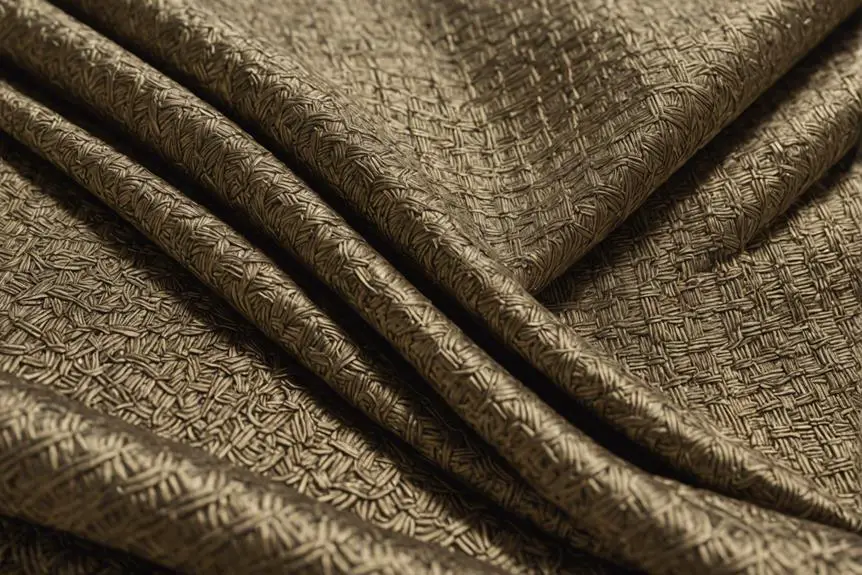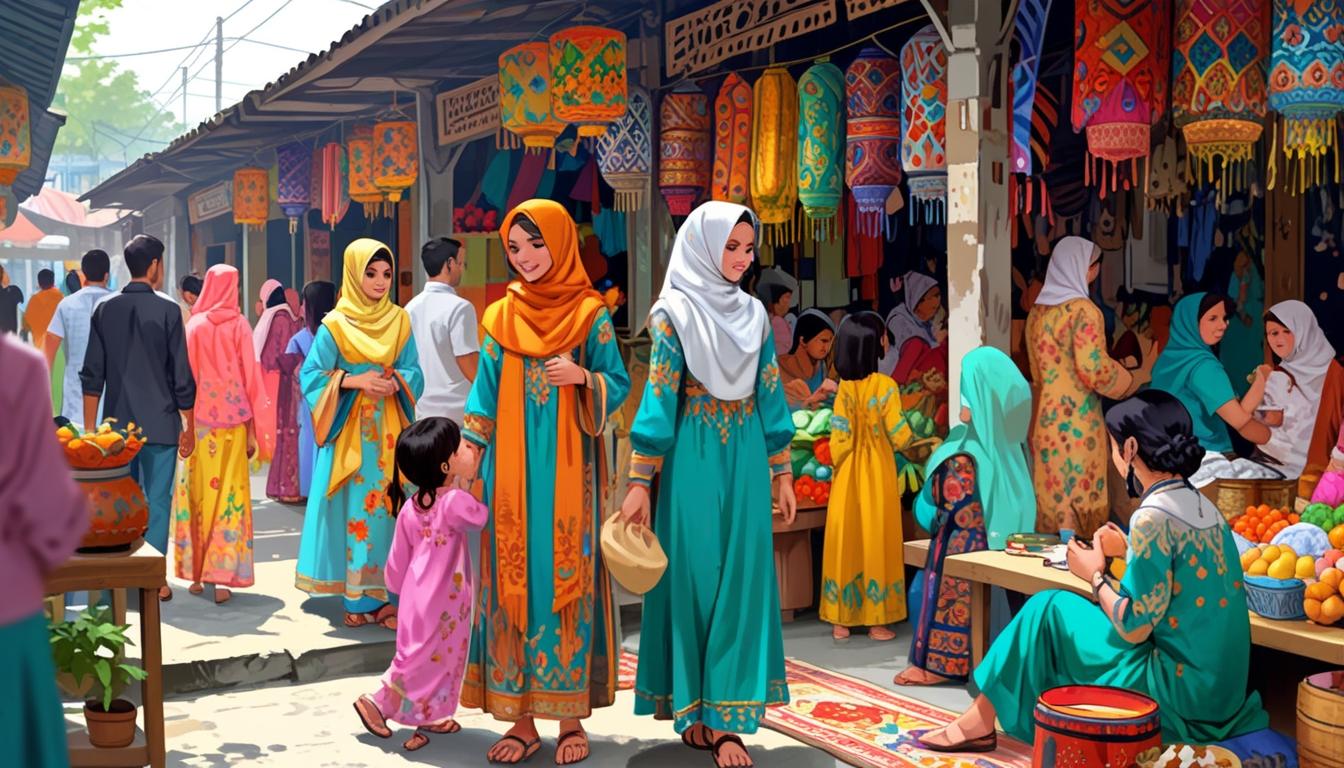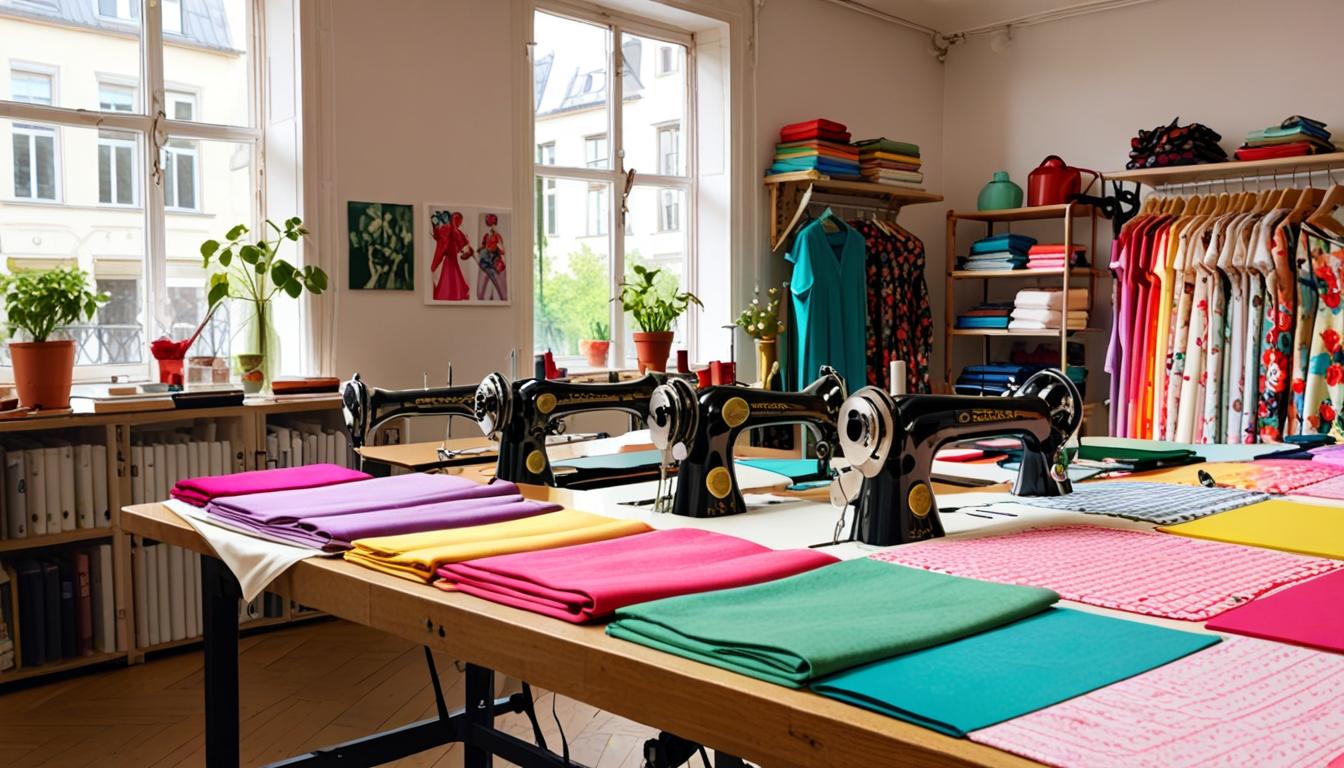When you're trying to identify Delaine fabric, you'll want to focus on its smooth, lightweight texture and vibrant printed designs, which often show through on the reverse side. You'll notice a distinct plain weave structure that combines cotton and fine worsted wool, giving it a luxurious feel. Pay attention to the soft drape and durability, as these qualities are hallmarks of high-grade textiles. But there's more to this fabric than meets the eye—understanding its historical significance and dyeing challenges can further enhance your appreciation. What else might surprise you about Delaine?
Definition and Characteristics
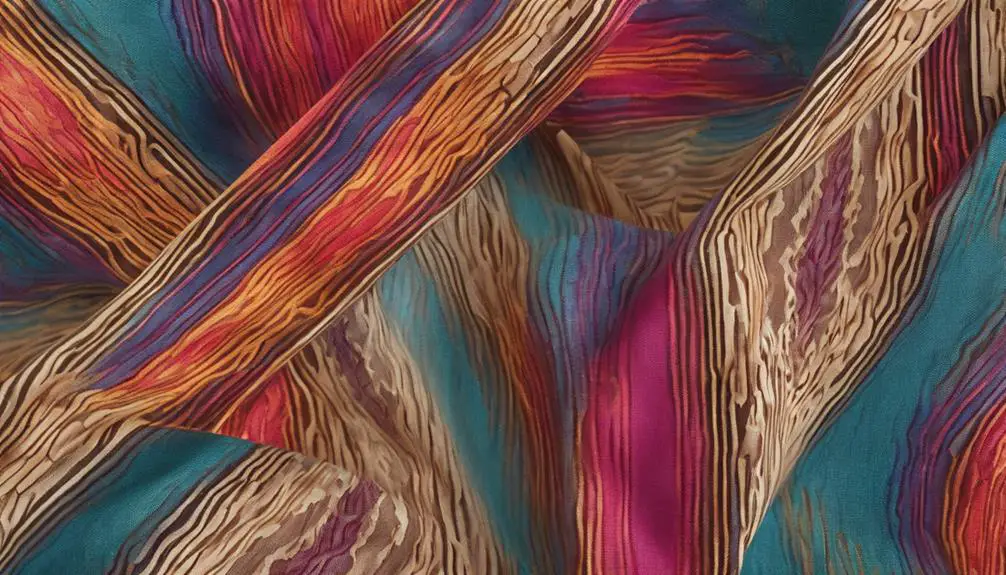
Identifying Delaine fabric starts with understanding its unique definition and characteristics. So, what exactly is Delaine? Well, it's a high-grade woolen or worsted fabric, often known as Mousseline de Laine. This fabric is all about fine combing wool, which gives it that soft and luxurious feel. Plus, it's made with a plain weave structure, making it lightweight yet incredibly durable. You'll find it's perfect for crafting beautiful dresses and skirts that can easily shift from casual to formal occasions.
Now, let's talk about its colorful side! Delaine fabric often features printed designs on the reverse side, showcasing vibrant colors, especially in shades of blue and green. Can you picture those rich hues? They really pop! And don't forget about its versatility. Whether you're dressing up for a special event or just looking for something chic to wear out, Delaine has got your back.
When you run your fingers across it, you'll notice its soft texture and fine quality. It's like wrapping yourself in a gentle hug! And here's a fun fact: in the 19th century, English mills produced a ton of this lovely material, making it super popular in American fashion. So, next time you're shopping or browsing through textiles, keep an eye out for Delaine. You might just find your new favorite fabric! Isn't that exciting?
Historical Significance
Delaine fabric's historical significance is closely tied to its rise in popularity during the 19th century, particularly in women's fashion. Back then, this fabric made from high-grade wool and cotton blends quickly became a favorite for dressmaking, reflecting the ever-evolving trends of the time. Can you imagine the vibrant dresses women wore, made from this luxurious material?
The English mill Hargreaves began producing delaine fabrics in 1849, which was a big deal for domestic textile production. It catered specifically to American quilters, helping them create stunning quilts that showcased the fabric's unique prints. And let's not forget about the historical sample books from American delaine manufacturers like Greens Dale Bleachery, which started in 1843. They displayed an array of bright designs that made delaine the go-to fabric for quilting.
After 1860, delaine fabrics saw a surge in use in American quilts. This shift reflected not just changing tastes but also the growing availability of printed delaine options. It was like a little fashion revolution! You could mix and match patterns, creating beautiful quilts that told a story with every stitch.
Fabric Structure and Composition
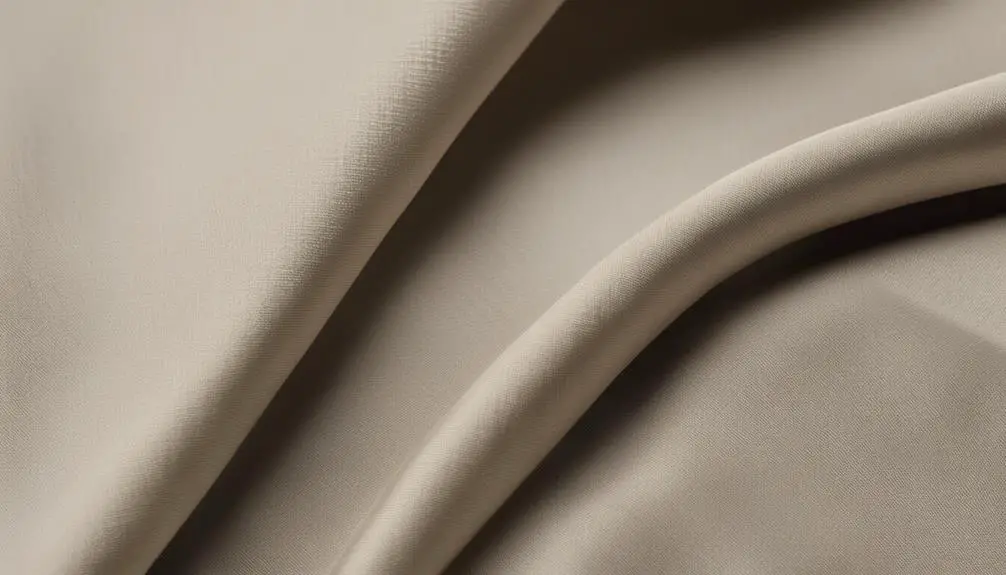
You'll find that the fabric structure and composition of Delaine play an essential role in its appeal and functionality. This fabric features a plain weave, which means it's made using a cotton warp and worsted wool filling. What does that mean for you? Well, it results in a lightweight yet durable textile that's perfect for a variety of garments, like dresses and skirts.
The compact structure of Delaine adds strength and longevity, so you can wear it with confidence. It's available in different weights too! If you're looking for something light and breezy, you'll find finer threads. On the flip side, heavier threads offer a more robust option for those chilly days.
Historically, Delaine was crafted from high-grade wool—specifically fine combing wool. This enhances its luxurious feel, making it a favorite for anyone who loves quality textiles. You might be wondering, "Does it dye well?" Well, here's where it gets a bit tricky. Wool fibers tend to retain color better than cotton, which can lead to some differences in color intensity. This uniqueness is part of what makes Delaine interesting, right?
Dyeing Techniques and Challenges
The dyeing process for Delaine fabric presents unique challenges due to its blend of cotton and wool fibers. You might wonder why this is so tricky. Well, it all comes down to how these fibers absorb dye. Cotton and wool have different dye affinities, which often leads to uneven color absorption. It's like trying to paint a fence with two different kinds of paint—one soaks it right up, while the other just sits there!
Achieving solid, uniform colors in Delaine fabrics can be tough. If the dye mixing isn't done well, you could end up with stark color differences that really detract from the fabric's visual appeal. Imagine wearing a vibrant shirt that looks patchy—no thanks! The dyeing techniques you choose need to take into account this mixed fiber composition, ensuring that both cotton and wool fibers are treated in a way that complements their unique characteristics.
While Delaine fabrics often boast bright, eye-catching colors, the variability in dye retention between cotton and wool can create a threadiness that impacts their overall look. You definitely want that cohesive vibe! So, when working with Delaine, it's crucial to carefully select your dyes and application methods to achieve the best results. It's all about making those colors pop without losing the fabric's charm. So, roll up your sleeves and get ready to tackle those dyeing challenges with confidence! You've got this!
Common Applications and Uses
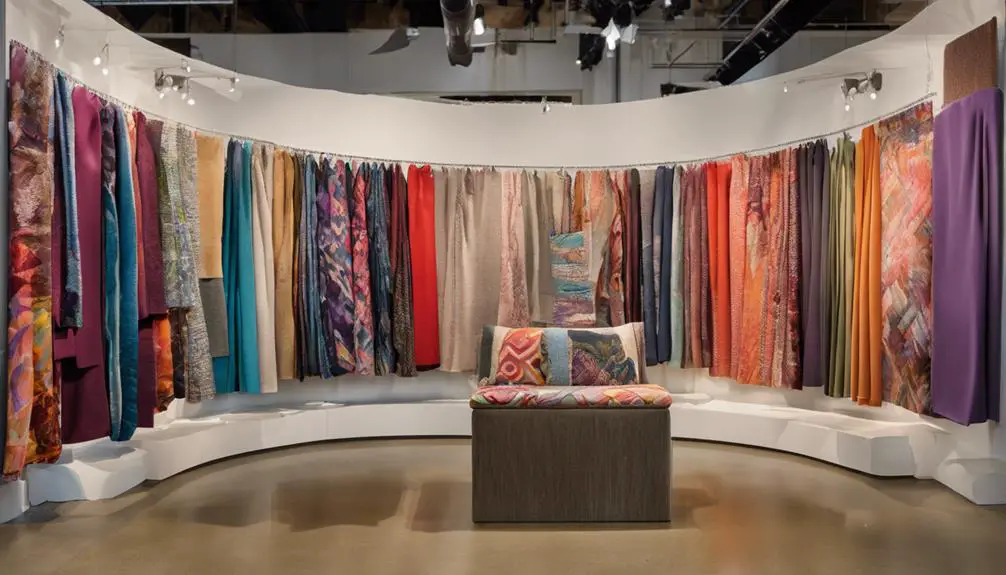
Versatile and lightweight, Delaine fabric finds its place in a variety of applications, making it a favorite choice for many. You'll often see it in women's clothing, especially for those lovely dresses and skirts. It's perfect for warm weather, thanks to its breathable nature. Did you know that during the 19th century, Delaine was all the rage for summer outfits? Between 1830 and 1840, people just couldn't get enough of those colorful, printed Delaine fabrics!
But it's not just about fashion; Delaine has a spot in home textiles too. Think curtains and upholstery! Imagine walking into a room with warm, inviting Delaine curtains swaying gently in the breeze. It adds a touch of elegance without breaking the bank. Plus, its blend of cotton and worsted wool helps it keep its colors vibrant—perfect for both casual and formal settings.
You might even find Delaine in high-end fashion collections. Designers in the United States still appreciate the quality and luxury that comes with this fabric. It's like wearing a piece of history! So, whether you're dressing up for a fancy event or just lounging at home, Delaine fabric has got your back.
Isn't it amazing how this fabric has stood the test of time? Next time you shop, keep an eye out for Delaine. You might just discover your new favorite outfit!
Frequently Asked Questions
How Do You Tell What Type of Fabric You Have?
So, you wanna figure out what type of fabric you've got? Start with some texture analysis! Run your fingers over it—does it feel soft or rough? Check out those fabric characteristics too. Is it lightweight and durable, or heavy and stiff? Don't forget to look for any unique prints or patterns. And hey, if it's got some serious color vibrancy, you might just have a winner. Have fun exploring your fabric treasures!
What Is Delaine Fabric?
Delaine fabric is a fascinating textile! It's a lightweight, durable material made from fine combing wool and cotton yarn, making it super comfy for clothing. Its history dates back to the 19th century, especially popular in America. You'll love its versatility! Delaine's characteristics include a plain weave and often a printed reverse side. Ever thought about how cool it is that a fabric can have such a rich background? It's truly special!
Is There an App to Identify Fabrics?
Absolutely, there are plenty of fabric identification tools and textile recognition apps out there! You can snap a pic of your fabric, and these apps work their magic to tell you what it is. How cool is that? Just think about it—no more guessing! You can even input details like fiber content to get more accurate results. So, next time you're puzzled by a fabric, your phone's got your back! Isn't technology amazing?
How Do You Identify Synthetic Fabric?
To identify synthetic fabric, you'll want to look for shiny, smooth surfaces—think polyester or nylon. You can test it by burning a small piece; if it melts and smells sweet or chemical, it's synthetic! Also, check the breathability—if it feels hot and sticky, it's likely a synthetic blend. Remember, synthetic fibers usually resist wrinkles, making them easy to care for. So, are you ready to become a fabric detective?
Conclusion
So, now you're armed with the know-how to spot Delaine fabric! Keep an eye out for that smooth texture, vibrant prints, and soft drape. Remember, it's all about those rich colors and that unique weave. Whether you're shopping or just admiring fabrics, you can impress your friends with your newfound knowledge. Isn't it cool to notice the little details? Go ahead and explore, and who knows what amazing finds you'll uncover next!
